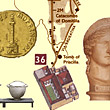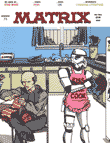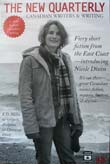 Notes on the Voyage of Owl and Girl (2013) has been published in print Fourteen Hills: The San Francisco State University Review, 20.2. The web iteration of Notes on the Voyage of Owl and Girl was first presented in “Avenues of Access: An Exhibit & Online Archive of New ‘Born Digital’ Literature”, curated by Dene Grigar & Kathi Inman Berens, at the Modern Languages Association (MLA) Convention in Boston, MA, USA, in January 2013.
Notes on the Voyage of Owl and Girl (2013) has been published in print Fourteen Hills: The San Francisco State University Review, 20.2. The web iteration of Notes on the Voyage of Owl and Girl was first presented in “Avenues of Access: An Exhibit & Online Archive of New ‘Born Digital’ Literature”, curated by Dene Grigar & Kathi Inman Berens, at the Modern Languages Association (MLA) Convention in Boston, MA, USA, in January 2013.
Notes on the Voyage of Owl and Girl is a work of fiction. Any resemblances to actual events, locals, persons or texts are entirely intentional. This computer-generated narrative conflates and confabulates characters, facts, and forms from accounts of voyages into unknown seas undertaken over the past 2340 years. This ever-shifting text is composed of fragments of stories of fanciful, fluid, and quite possibly fictional floating places described or imagined in such diverse works as Tacitus, Agricola (97-98), Hakluyt, Voyages and Discoveries (1589–1600), and Eugene Field, Wynken, Blynken and Nod (1889). The title characters Owl and Girl are borrowed from Edward Leer’s Victorian nonsense poem, The Owl and the Pussy-Cat (1871). In my version, the passive Pussy-cat has been replaced with a Girl most serious, most adventurous, most determined.
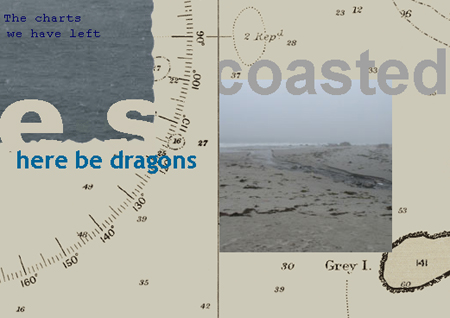
Girl and her lazy friend Owl set out, set sail, sail away toward a strange sea in a boat, craft, raft of pea-, bottle-, lima-bean- or similar shade of green. The cartographic collage they voyage through is an assemblage of fluid floating places – discontinuous surfaces pitted with points of departure, escape routes, lines of flight. Five horizontally scrolling texts annotate this mythical, implausible, impossible voyage toward seas unknown, the northern lights, the fountain of youth.
Following the launch of the web-based iteration of Notes on the Voyage of Owl and Girl, I pillaged the JavaScript-generated narrative and four of the horizontally scrolling lines of text to create a script for live performance, which has since been performed during In(ter)ventions: Literary Practice at the Edge at The Banff Centre, Banff, Canada, February 2013, and ELO 2013: Chercher le texte, Le Cube, Paris, France, 26 September 2013. The piece published in Fourteen Hills: The San Francisco State University Review, 20.2 is based on this script.
This print text comprises two distinct sections: narrative and notes. The opening ‘narrative’ section undermines the authority of an authorial voice by interrupting the linear narrative flow of its sentences with incoherence, indecision, vagaries, possibilities, and multiplicities by inserting some but not all of the variables contained in the JavaScript variable strings. For example, the first sentence of the ‘narrative’ section:
An owl and a girl most [adventurous’, ‘curious’, ‘studious’] [‘set out’, ‘set sail’, ‘sailed away’] in a [bottle-green’, ‘beetle-green’, ‘pea-green’] [‘boat’, ‘sieve’, ‘skiff’, ‘vessel’]; a [‘beautiful’, ‘ship shape’, ‘sea worthy’] [‘craft’, ‘raft’, ‘wooden shoe’], certainly, though a [‘good deal’, ‘wee bit’, ‘tad’] too [‘small’, ‘high in the stern’] to suit the two of them.
In the ‘notes’ section, fragments from the horizontally scrolling texts have been heterodyned, or forced together, into one long text. On the page, the different lines of Girl’s notes remain differentiated by indentation, which, alas, is not easily representable in blog formatting. You’ll just have to take my word for it. By my word, of course, I mean the girl’s.
For more information on Notes on the Voyage of Owl and Girl, take a look at Poetry Connection: Link Up with Canadian Poetry, an initiative of Canadian Parliamentary Poet Laureate Fred Wah (2013) aimed at making experimental writing practices accessible to a wide audience through the distribution of YouTube video recordings of readings and PDFs containing discussion topics, writing ideas, and other pedagogical aids. Here is a video description and performance of Notes on the Voyage of Owl and Girl (YouTube). And here are discussion topics and writing ideas based on Notes on the Voyage of Owl and Girl (PDF).
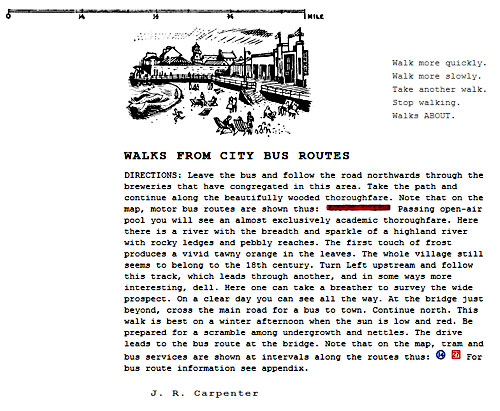
 Notes on the Voyage of Owl and Girl (2013) has been published in print
Notes on the Voyage of Owl and Girl (2013) has been published in print 
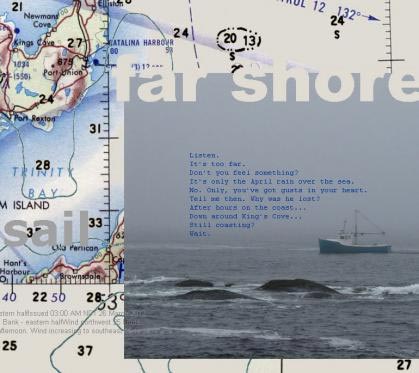

 Dragnet Magazine, a new online/eBook literary journal that “trawls the sea of stories for the best fiction,” has included a short story of mine in their very first issue. The story is called Best Behaviour. It’s fiction, obviously. Given my limited knowledge on the subject, the story is a short one, weighing in at just 879 words. It’s based on an even shorter story. My behaviour is improving in tiny increments year by year.
Dragnet Magazine, a new online/eBook literary journal that “trawls the sea of stories for the best fiction,” has included a short story of mine in their very first issue. The story is called Best Behaviour. It’s fiction, obviously. Given my limited knowledge on the subject, the story is a short one, weighing in at just 879 words. It’s based on an even shorter story. My behaviour is improving in tiny increments year by year.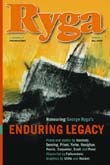 Three of my short stories appear in the inaugural issue of Ryga: A journal of Provocations, a new publication of The Ryga Initiative at Okanagan College, in association with the Okanagan Institute.
Three of my short stories appear in the inaugural issue of Ryga: A journal of Provocations, a new publication of The Ryga Initiative at Okanagan College, in association with the Okanagan Institute.